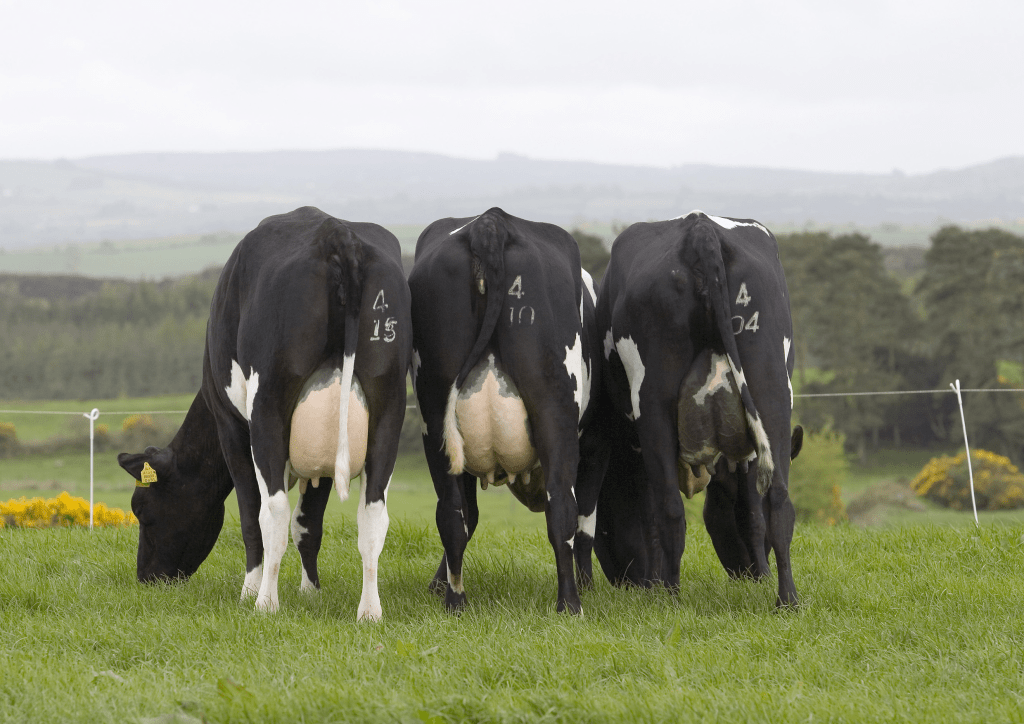Create a herd as strong and individual as you with HYVIG.
A structured crossbreeding strategy, individual to your farm, could be the answer you have been looking for to create a longer living, more efficient and fertile herd.
Even in a dairy industry as diverse as the UK, crossbreeding can be the right solution for any type of system or milk contract, however one size does not fit all and therefore a tailor-made breeding strategy is needed to create a cow that suits each individual herd. Now more than ever, there is also an increasing need to milk cows that are more efficient, fertile and live longer and crossbreeding is unquestionably one of the quickest ways of getting your herd to the desired level.
How to get started with crossbreeding…
You firstly need to outline your main priorities for herd improvement and a good place to start with this is to look at the main reasons why cows are leaving the herd. Often, culling reasons are dominated by the involuntary reasons why cows leave the herd such as lameness, fertility and mastitis, but it is equally as important to identify where potential improvements could be made in efficiencies from bodyweight/maintenance and a closer alignment between production and your milk contract. With your priorities set, you can then make an informed decision regarding which breeds and how many you should include, and this is where HYVIG is unique.
Rather than pre-prescribing a 2-way, 3-way or even 4-way crossing, with HYVIG we will identify exactly what is needed on an individual customer and farm basis and then deliver the best tailor-made solution to match. Many farmers will be feeding a customised ration to suit their farm and system and genetics should be no different. As part of our HYVIG offering we have access to the top genetics from all of the main breeds allowing us to focus on exactly what is right for each individual customer without being limited by the choice of breeds available.
Every breed has its own strengths and crossbreeding allows you to exploit these. Greatest improvements are usually achieved from the differences between the breeds rather than the difference within the one breed, but it is still vital to choose the very best sires from within the chosen breeds.

The combination of two breeds alone can often meet the goals of the herd, whereas in other cases it will be necessary to add a third or fourth rotation. On a frequent basis however, justification for the introduction of a third breed is often to maximise hybrid vigour and whilst this is undoubtedly an important benefit of crossbreeding, it alone will not meet the goals set for your herd. It is a question of considering whether the relatively small benefit of additional hybrid vigour from a third cross would outweigh the possibility of a reduction in efficiencies, or introduction of an undesired characteristic that the third breed could also bring.
It is human nature to be cautious of change and it has been said to me more than once by people who are now successfully crossbreeding that ‘at the time it was the hardest decision we had to make but looking back it should have been the easiest’. Crossbreeding has been around for generations, it has proven time and time again that it is an effective breeding strategy in every sector of commercial agriculture – our Sheep, Pigs, Poultry and even our Crops are all hybrids. Every dairy producer can take advantage of it but must remember that for crossbreeding to be a success you need to have a plan and work with structure, however I can’t think of anyone that has undertaken a proper crossbreeding strategy and regretted it!
Liam Healy,
UK HYVIG Manager






